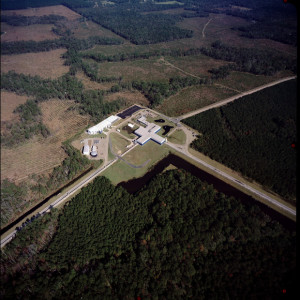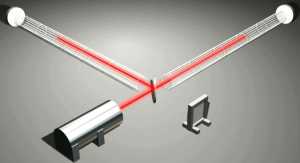Peter Lobner
One hundred years ago, Albert Einstein presented his General Theory of Relativity in November 1915, at the Prussian Academy of Science. Happy Anniversary, Dr. Einstein!
Today, general relativity is being tested with unprecedented accuracy with a new generation of gravity-wave “telescopes” in the U.S., Italy, Germany, and Japan. All are attempting to directly detect gravity waves, which are the long-predicted quakes in space-time arising from cataclysmic cosmic sources.
The status of four gravity-wave telescopes is summarized below.
USA: Laser Interferometer Gravitational-Wave Observatory (LIGO)
LIGO is a multi-kilometer-scale gravitational wave detector that uses laser interferometry to, hopefully, measure the minute ripples in space-time caused by passing gravitational waves. LIGO consists of two widely separated interferometers within the United States; one in Hanford, WA and the other in Livingston, LA. These facilities are operated in unison to detect gravitational waves. The Livingston and Hanford LIGO sites are shown in the following photos (Hanford above, Livingston below):
 Source LIGO Caltech
Source LIGO Caltech Source: LIGO Caltech
Source: LIGO Caltech
LIGO is operated by Caltech and MIT and is supported by the National Academy of Sciences. For more information, visit the LIGO website at the following link:
https://ligo.caltech.edu/page/about
Basically, LIGO is similar to the traditional interferometer used in 1887 in the famous Michelson-Morley experiment (https://en.wikipedia.org/wiki/Michelson–Morley_experiment). However, the LIGO interferometer incorporates novel features to greatly increase its sensitivity. The basic arrangement of the interferometer is shown in the following diagram.
Each leg of the interferometer has a physical length of 4 km and is a resonant Fabry-Perot cavity that uses a complex set of mirrors to extend the effective arm length by a factor of 400 to 1,600 km.
On 18 September 2015, the first official “observing run” using LIGO’s advanced detectors began. This “observing run” is planned to last three months. LIGO’s advanced detectors are already three times more sensitive than Initial LIGO was by the end of its observational lifetime in 2007. You can read about this milestone event at the following link:
https://ligo.caltech.edu/news/ligo20150918
You also can find much more information on the LIGO Scientific Collaboration (LSC) at the following link:
Italy: VIRGO
VIRGO is installed near Pisa, Italy, at the site of the European Gravitational Observatory (http://www.ego-gw.it/public/virgo/virgo.aspx). VIRGO is intended to directly observe gravitational waves using a Michelson interferometer with arms that are 3 km long, with resonant Fabry-Perot cavities that increase the effective arm length by a factor of 50 to 150 km. The initial version of VIRGO operated from 2007 to 2011 and the facility currently is being upgraded with a new, more sensitive detector. VIRGO is expected to return to operation in 2018.
You can find much more information on VIRGO at the following link:
Germany: GEO600
GEO600 is installed near Hanover, Germany. It, too, uses a Michelson interferometer with arms that are 600 meters long, with resonant Fabry-Perot cavities that double the effective arm length to 1,200 meters.
You can find much more information on the GEO600 portal at the following link:
Japan: KAGRA Large-scale Cryogenic Gravitational Wave Telescope
The KAGRA telescope is installed deep underground, in tunnels of Kamioka mine, as shown in the following diagram.
Like the other facilities described previously, KAGRA is a Michelson interferometer with resonant Fabry-Perot cavities. The physical length of each arm is of 3 km (1.9 mi). KAGRA is expected to be in operation in 2018.
You can find much more information on KAGARA at the following links:
http://www.astro.umd.edu/~miller/Compact/lcgt.pdf
and,

